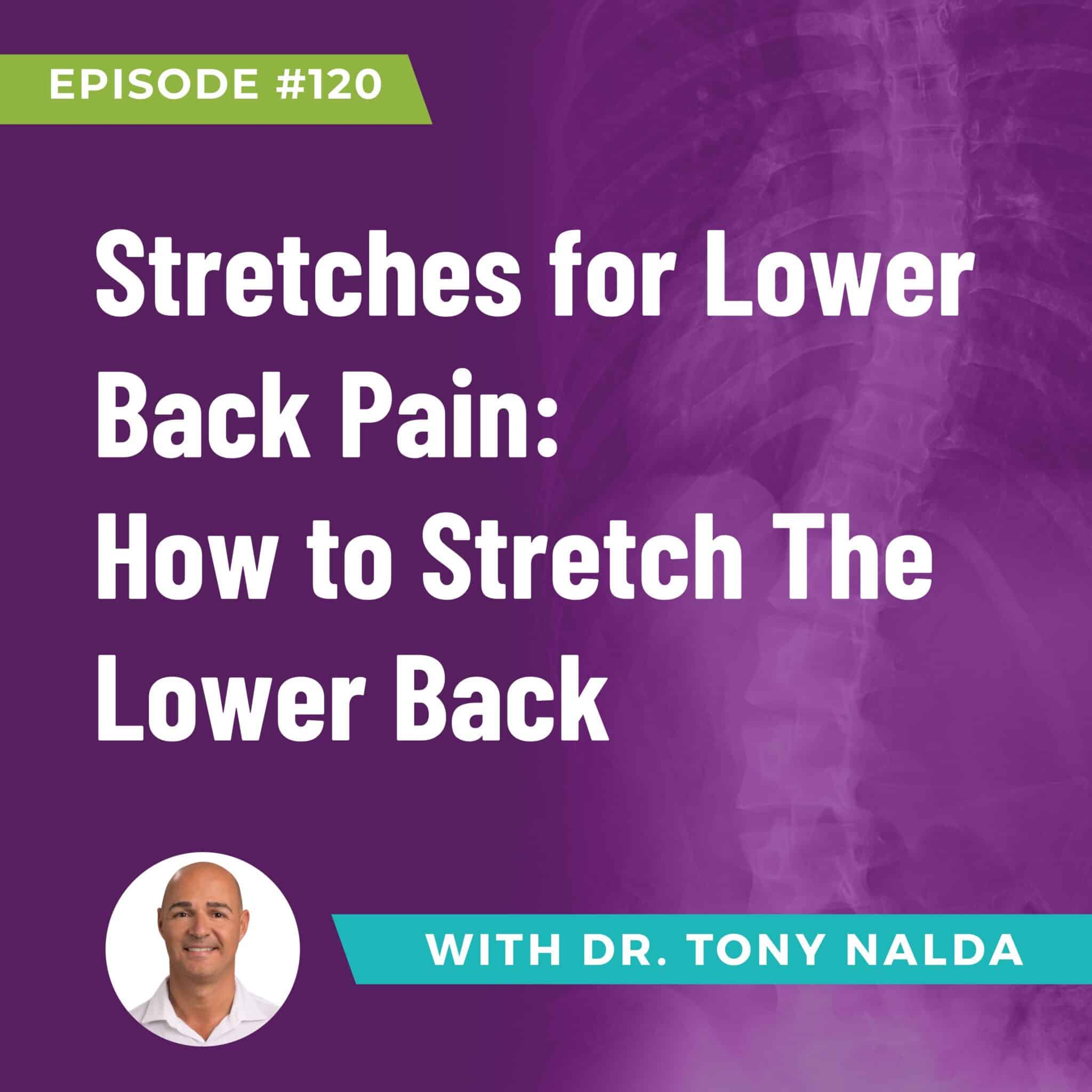Episode 120: Stretches for Lower Back Pain: How to Stretch The Lower Back
Summary: In this episode, we dive into the topic of lower back pain and discuss effective stretches that can help alleviate discomfort. Our host explains the anatomy of the lumbar spine, common causes of lower back pain, and provides three key stretches to help relieve pain and tension in the lower back.
Key Points:
- Understanding the Lumbar Spine:
- The lumbar spine, or lower back, is composed of 5 vertebrae (L1-L5), although some people may have 6.
- It supports the weight of the entire body, which is why the bones and discs in this region are larger and stronger than those in the cervical (neck) or thoracic (middle back) spine.
- The lumbar spine works with the pelvis to facilitate movement, including bending, lifting, and walking, which makes it prone to injury and pain.
- Causes of Lower Back Pain:
- Common causes include injuries (strains, sprains, accidents), overuse, poor posture, and spinal conditions like scoliosis, spinal stenosis, spondylolisthesis, and disc degeneration.
- Misalignment of the spine, such as hyperlordosis (excessive inward curve) or kyphosis (outward curve), can also lead to pain.
- Many conditions overlap, and addressing only one aspect (e.g., flexibility) may not resolve all underlying issues.
- Three Effective Stretches for Lower Back Pain:
- Child's Pose: A stretch that elongates the lower back by flexing and flattening the lumbar curve, helping to relieve tension in the muscles and tissues.
- Knee to Chest Stretch: A stretch that targets the lower back and hamstrings, which connect to the lumbar spine. It helps release tightness in the back and surrounding muscles.
- Piriformis Stretch: Focuses on stretching the piriformis muscle, which can relieve lower back pain and tightness.
- Finding the Root Cause:
- While these stretches may help manage symptoms, it's crucial to identify the underlying cause of lower back pain.
- Stretching alone may not be effective if there are underlying issues such as alignment problems, degeneration, or spinal conditions that require more comprehensive treatment.
- Consult with a medical professional to determine the appropriate stretches and treatment plan tailored to your specific condition.
Conclusion: If you're experiencing lower back pain, don't ignore it. Seek professional advice to find out the root cause and ensure you’re following the most effective treatment plan. Remember, it’s essential to take a holistic approach when dealing with spinal health to achieve the best possible outcome.
Artlist.io 847544
Podcast: Play in new window | Download
Subscribe: RSS
Dr. Tony Nalda
DOCTOR OF CHIROPRACTIC
Severe migraines as a young teen introduced Dr. Nalda to chiropractic care. After experiencing life changing results, he set his sights on helping others who face debilitating illness through providing more natural approaches.
After receiving an undergraduate degree in psychology and his Doctorate of Chiropractic from Life University, Dr. Nalda settled in Celebration, Florida and proceeded to build one of Central Florida’s most successful chiropractic clinics.
His experience with patients suffering from scoliosis, and the confusion and frustration they faced, led him to seek a specialty in scoliosis care. In 2006 he completed his Intensive Care Certification from CLEAR Institute, a leading scoliosis educational and certification center.
After receiving an undergraduate degree in psychology and his Doctorate of Chiropractic from Life University, Dr. Nalda settled in Celebration, Florida and proceeded to build one of Central Florida’s most successful chiropractic clinics.
His experience with patients suffering from scoliosis, and the confusion and frustration they faced, led him to seek a specialty in scoliosis care. In 2006 he completed his Intensive Care Certification from CLEAR Institute, a leading scoliosis educational and certification center.
About Dr. Tony Nalda
Dr. Tony Nalda is the Founder of Scoliosis Reduction Center, a leading expert in chiropractic care & conservative scoliosis treatment. He has published 2 books, is a podcast host, a conference speaker.
 Ready to explore scoliosis treatment? Contact Us Now
Ready to explore scoliosis treatment? Contact Us Now








